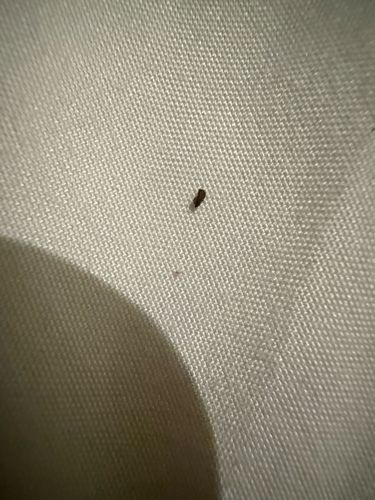Flea (likely Cat flea or Dog flea, but difficult to differentiate definitively from image)
Scientific Name: Ctenocephalides spp. (e.g., C. felis, C. canis)
Order & Family: Order Siphonaptera, Family Pulicidae
Size: 1-3 mm

Natural Habitat
Fleas are typically found on warm-blooded animals such as cats, dogs, and other mammals, including humans. They also reside in carpets, bedding, and cracks in floors, especially in areas frequented by their hosts.
Diet & Feeding
Adult fleas feed exclusively on the blood of their hosts (hematophagous). Larvae feed on organic debris, including adult flea feces (flea dirt).
Behavior Patterns
Fleas are wingless insects known for their ability to jump significant distances, aiding in host transfer. They lay eggs on the host, which then fall into the environment. The lifecycle includes egg, larva, pupa, and adult stages. Adults are attracted to warmth, vibrations, and carbon dioxide from potential hosts.
Risks & Benefits
Risks include causing itching, skin irritation, allergic reactions (flea allergy dermatitis) in pets, and can transmit diseases such as tapeworms (Dipylidium caninum) and Rickettsia typhi (murine typhus) to humans. They are generally considered pests with no significant benefits to humans or ecosystems in domestic environments, though they are part of the food chain for some predators.
Identified on: 11/3/2025